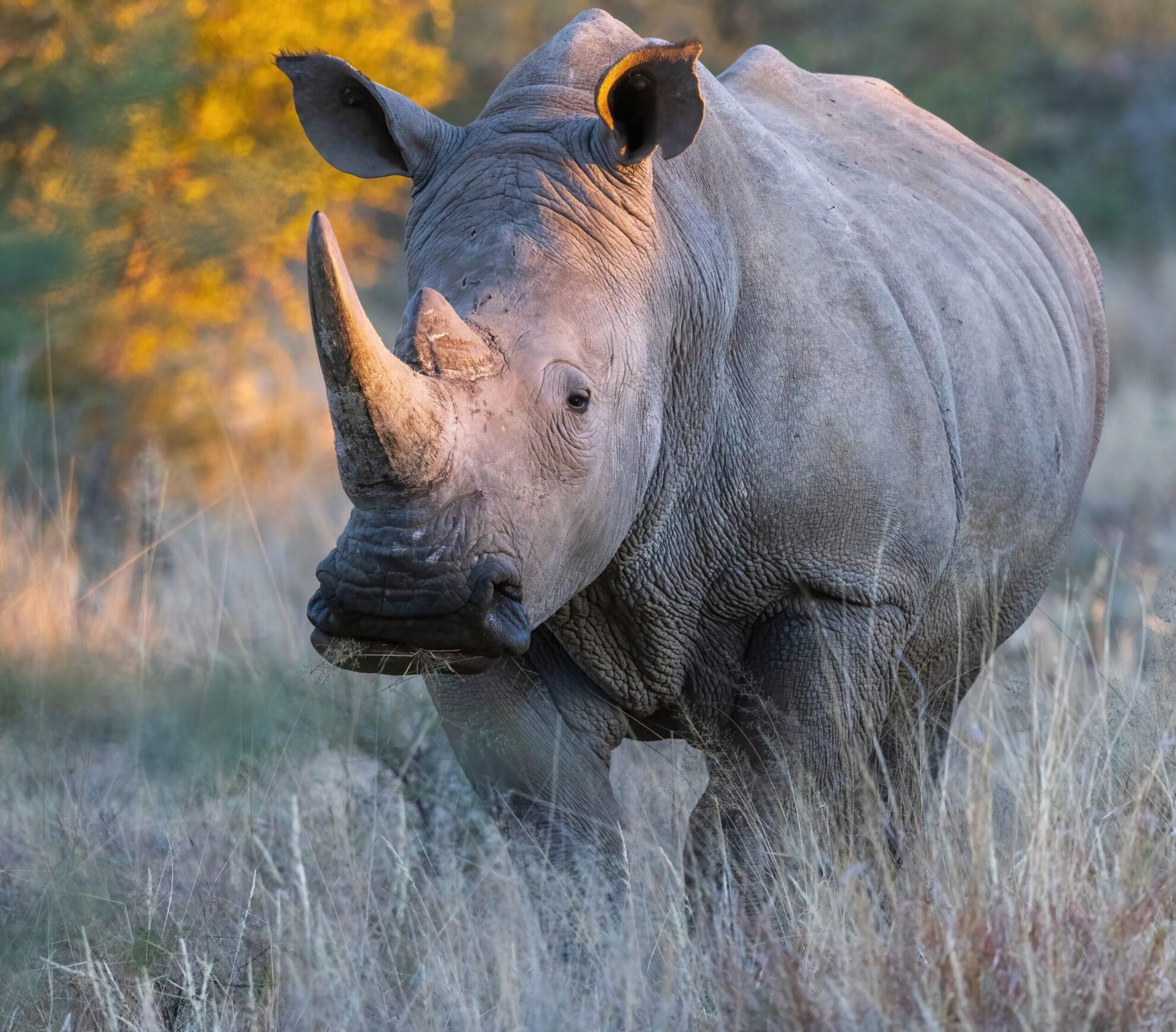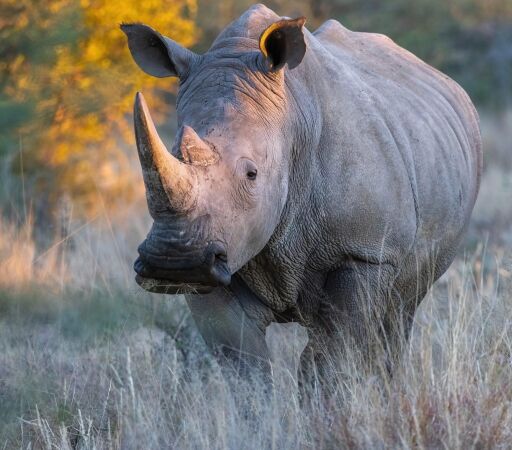

The rhinoceros or rhino as it is commonly called, is a member of Africa’s Big 5 and Danger 7 and remains a prized trophy when hunting in Africa. The second biggest land animal after the elephant, there are five species of rhinos, including two African rhinos and three Asian rhino species.
The two African rhino species are the black rhino (Diceros bicornis) and the white rhino (Ceratotherium simum). Contrary to popular belief, both the black and white rhinos are gray. The shade of gray may, however, vary as rhinos are known for wallowing in mud and dust, and, depending on their actual location, the sand may differ in color, which will then account for the different shades of animals.
There are two subspecies of white rhino:
Also referred to as the square-lipped rhino due to its wide lips, the white rhino is a herbivorous grazer, tucking into the succulent short grasses in their savanna and grassland habitats. They use their large, square-lipped mouths to chomp the grasses close to the ground.
Even with its large and imposing size, the white rhino is relatively unaggressive. The majority (98.8%) of the southern white rhinos occur in just four countries: South Africa, Namibia, Zimbabwe, and Kenya, with legal hunting of a white rhino only available in two countries, namely South Africa and Namibia.
White rhinos are known to have complex social structures. Females with calves may form groups of up to 14 animals. Adult males defend their one square mile territory, which they mark with vigorously scraped dung piles. The home range for adult females can be more than seven times larger, depending on habitat quality and population density.
Breeding females cannot leave a dominant male’s territory, which is marked and patrolled by its owner regularly. Males competing for a female may engage in serious conflict, using their horns and massive size to inflict wounds.
Although rhino poaching is illegal and there are several organizations in place to save rhinos and prevent poachers and traffickers, it remains prevalent, with a lucrative black market and rising demand from countries such as Vietnam and China.
The only two destinations worldwide where rhino hunting is legally offered, are South Africa and Namibia. CITES permits are required for these strictly controlled dangerous game hunting adventures. Rhino hunts are not cheap and only a few permits are issued annually.
Name:
Ceratotherium simum
Male Weight:
7,700 pounds
Male Shoulder Height:
5.5-6.1 feet
Range:
Mainly found in South Africa, Kenya, Namibia and Zimbabwe
Mating Period:
Year-round
Life span:
40-50 years
The white rhino is well-adapted to its environment, with sharp senses and a powerful build that help it detect and ward off threats in the vast savannas.
The white rhino is the larger of the two African rhino species and can weigh over 7,700 pounds when mature. They have an elongated face, with a distinct hump on their back. They are gray or gray-brown, with a thick skin. The white rhino has two horns, with the front horn being larger. It's often mistakenly reported that rhino horn is 'compressed hair', arising from the fibrous appearance of the horn. This is incorrect and the horn is constructed of layer upon layer of keratin, the same ingredient found in human hair and nails.
While traditional hunts are offered, featuring the walk-and-stalk method, some outfitters also offer a green-dart or vita-dart hunt. This is a more cost-effective hunt but does come with the same adrenaline-filled walk-and-stalk hunting method. The difference is that after this hunt, the rhino walks away, with an added vitamin to boost him on his way!
The challenge of rhino hunting is firstly to approach it, as it has very good hearing and sense of smell. Secondly, it has a very thick skin to penetrate. For many hunters, simply being on a dangerous game hunting safari targeting this spectacular mammal is sufficient. To have the opportunity to test your hunting prowess against that of one of the Big 5: priceless!
As with all the big five dangerous game hunting, the minimum legal requirement for rhino hunting is a .375 caliber shooting a 300-grain bullet. A well-placed bullet from a 416 Rigby, 500 Jeffery, 458 WM, or Lott will ensure proper penetration. A rhino’s skin is incredibly thick. Double rifles such as the 470NE, 500NE, and higher are preferred, especially in close quarters.
Search from our range of Hunts across various popular destinations in Africa.
Find A Hunt